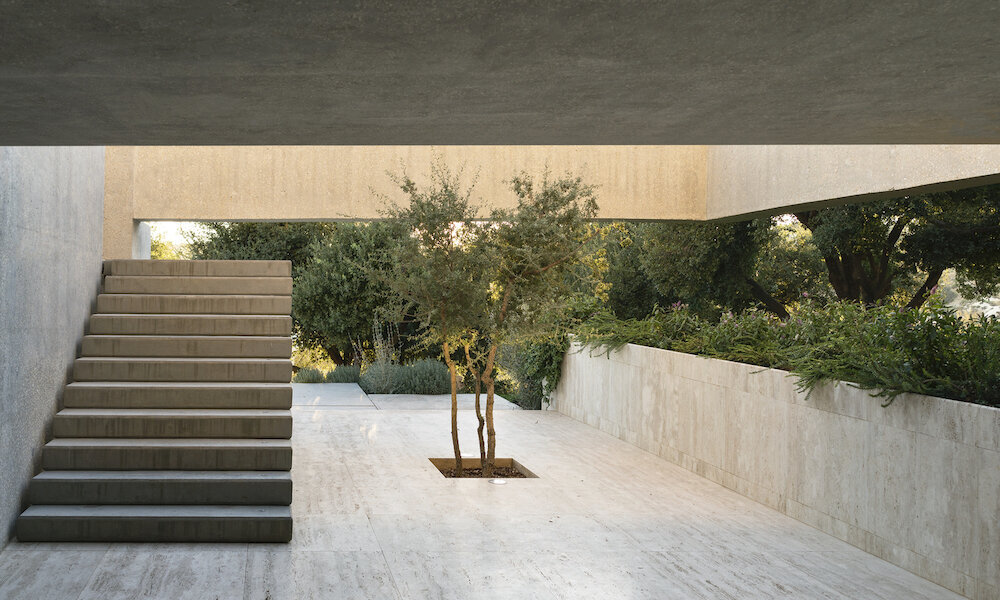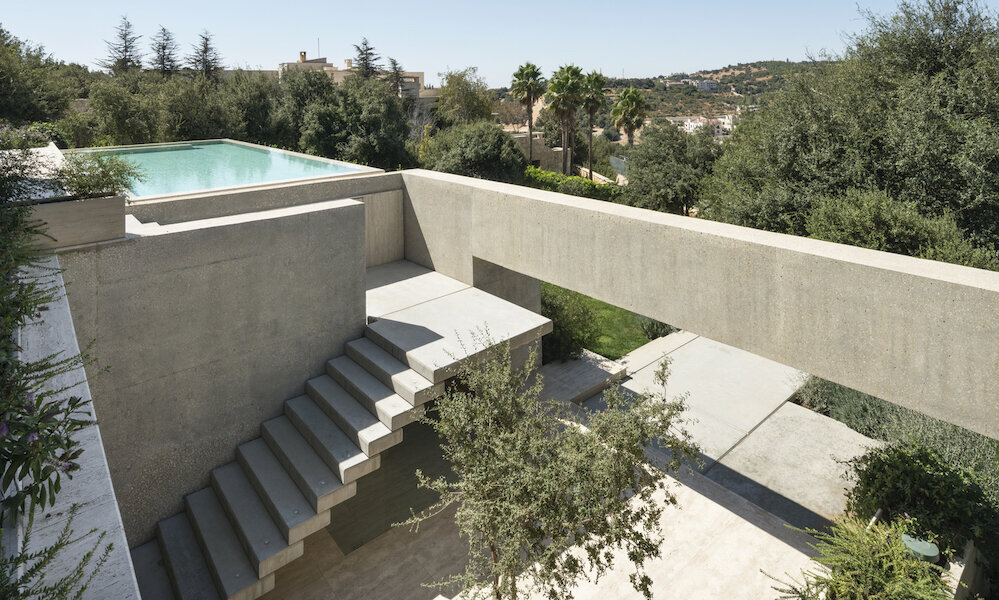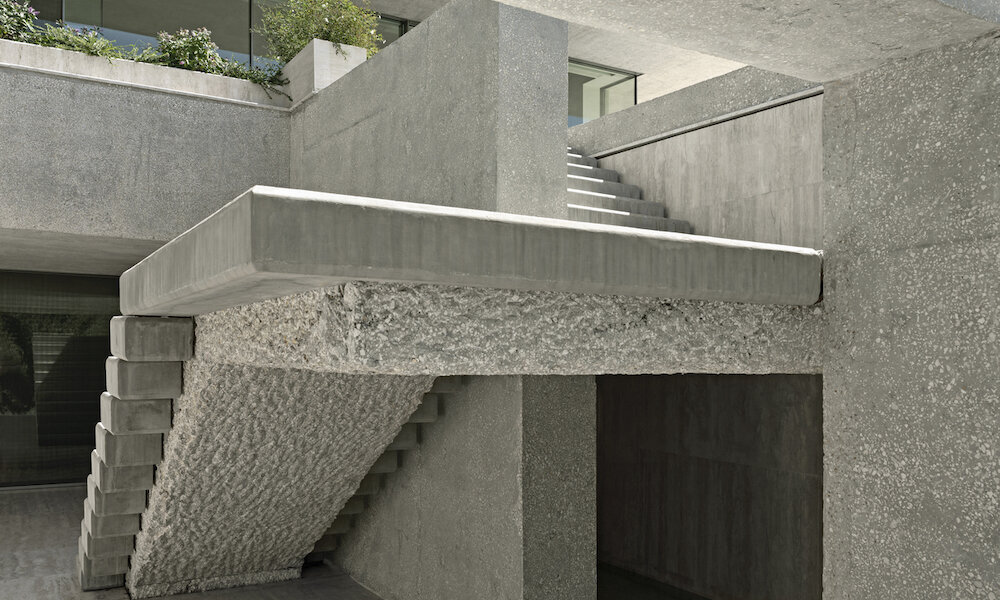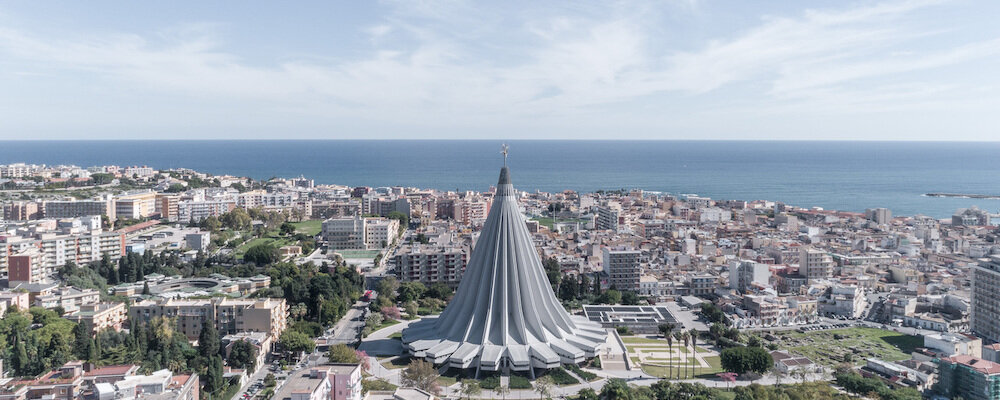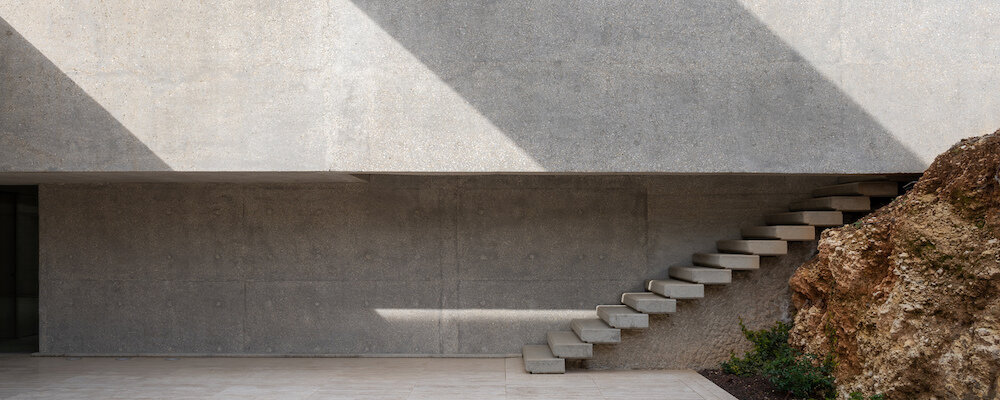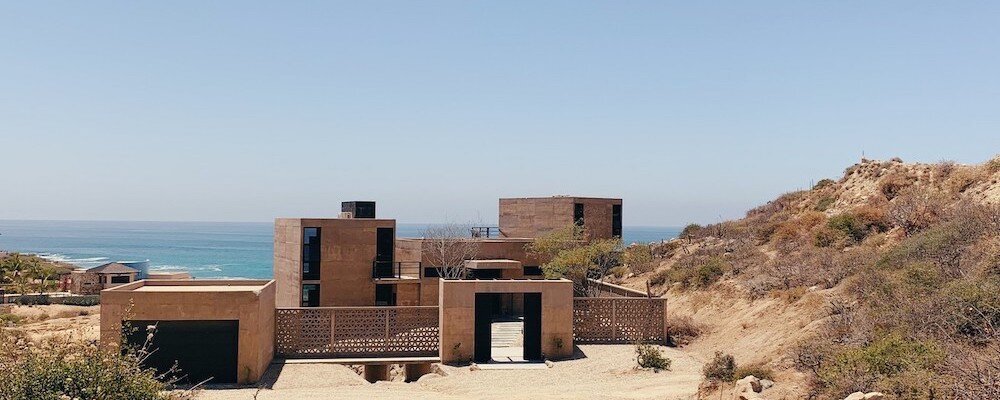#ConcreteWeek - K. Barghouti House
Thick concrete slabs running in parallel, massive structure connected to each others… the incredible lightness of concrete construction.
Day 3: The K. Barghouti House, Jordan.
I met with Sahel AlHiyari when visiting Amman during the first edition of its Design Week. Shy, introvert but extremely talented, the architect has a distinctive style that makes him standing out from any current trends in architecture.
Last year, he completed the Barghouti House, in Dabuq, a residential district to the West of the Jordanian capital, rich of native oak trees. Over the past two decades Dabuq has witnessed a spiraling mass development that has resulted in extensive environmental damage to perhaps the only forested area of Amman.
The site is a rectangular lot of land with a diagonal slope. The footprint is skewed in relation to the land perimeter to align itself with the direction of the slope and to take advantage of most of the open space that has no trees.
Two separate parts connected by a roof allow and frame a view to the landscape of the hills across the site from the entry point. The separation in mass adheres to a requirement, which calls for separating the guest quarters from the rest of the house.
The house consists of three floors, yet each level has a direct connection to the land or garden. Such connections result from embedding the first two levels of the house within the land to conform to its topographic levels and to mitigate the effect of scale the three floors.
The main arrival space is at the highest part of the land and it is defined by the L-shape plan of the upper third level of the house. This part of the house is entirely closed with no fenestrations apart from the garage and main entry of the house, which is a space carved out from the landscape and accessed by stairs.
This point of entry opens to the sky through the roof connection and to the landscape across through the interior space.
The massing of the project consists of a series of thick concrete slabs that run parallel to one another and hover over a deep recessed space that contain all the window fenestrations, planter beds and circulation paths and stairs.
This type of massing heightens the material weight of the project by means of the restricting of the visible elements of the project to a composition of monolithic slabs that interact and stand in contrast to the landscape.
The architecture though seemingly quite severe and angular in expression, maintains a more delicate or softer quality that is achieved by the hand-sanded surface of the concrete.
Some interior elements such as wood panelling, the fire place and furniture selection were done by david/nicolas (Beirut).
This technique produces an array of uneven undulating surfaces that begin to make more sculptural reference to the surrounding landscape and the ground the house sits on.
This controlled imperfection allows the project to also be in line with the local culture of construction, which still highly depends on low-technology and the work of specialised craftsmen.
Pictures by Pino Musi, Sosthen Hennekam

